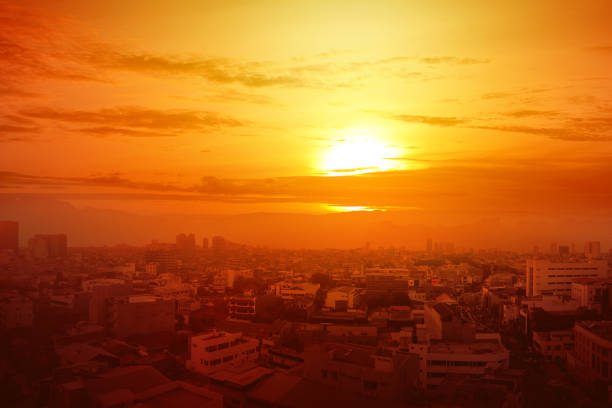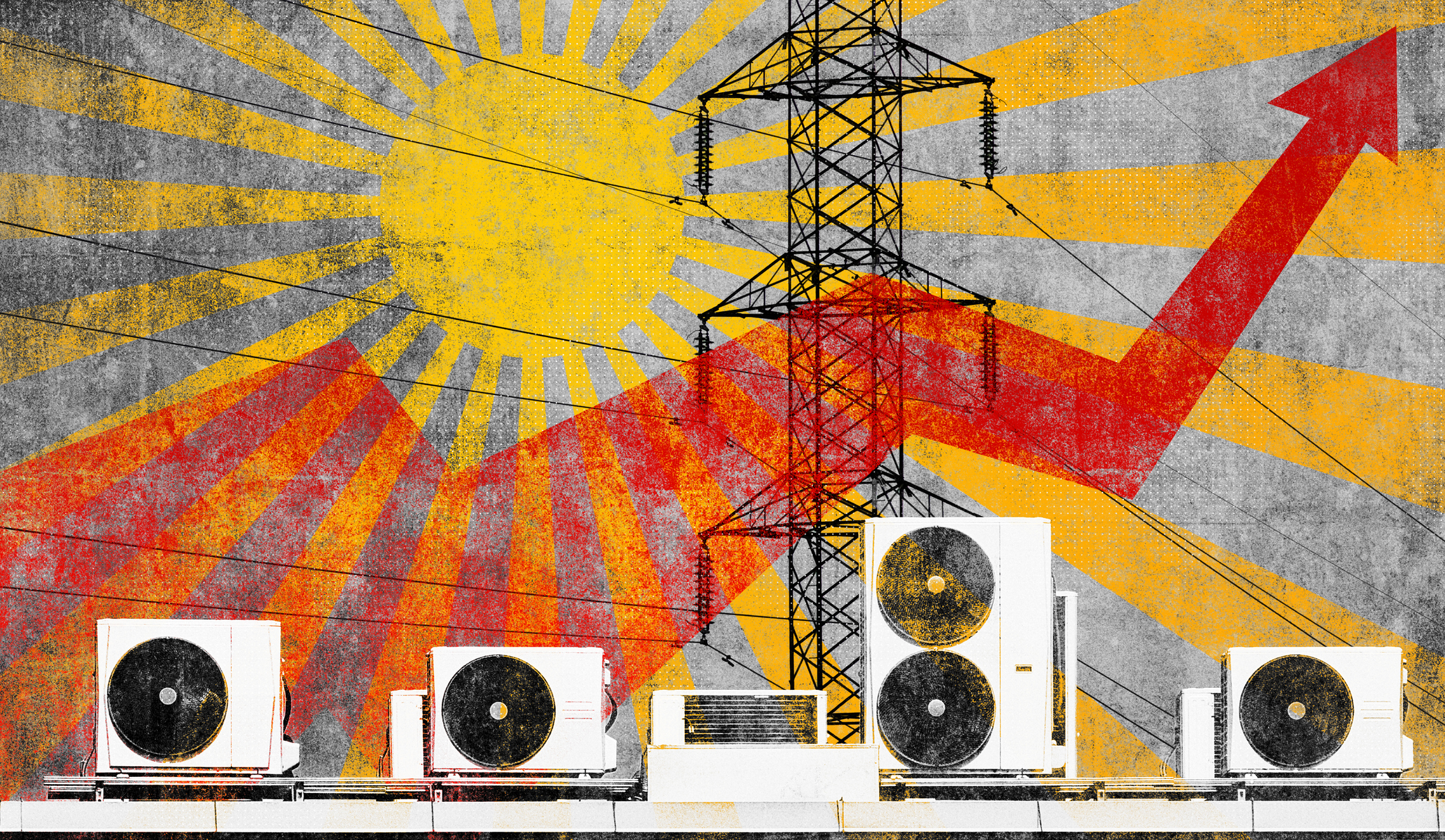It’s mid-summer, and seasonably hot, increasingly so over since the Industrial Revolution due to climate change pushing temperature extremes. It’s no secret that peak electric demand tends to occur during hotter months, but the combination of supply chain difficulties and an enduring heatwave in the northern hemisphere have challenged our electric grid resilience. Despite the increasing availability and reduced cost of renewable energy, the U.S. electric grid is confronting a host of challenges:
- Midcontinent ISO (MISO) faces a projected capacity shortfall in its North and Central areas, creating a high risk of climate-related energy emergencies.
- MISO and other regional transmission operators are coping with heightened risks to grid resilience at a time when much of the western United States is heavily impacted by widespread, severe drought and below-normal snowpack.
- Across much of Texas, extreme drought can produce weather conditions that are favorable to prolonged, wide-area heat events and extreme peak electricity demand despite recent resource additions (mostly renewable energy including solar and some wind) to the ERCOT system.
This sobering news comes from the North American Reliability Corporation (NERC), a not-for-profit international regulatory authority whose mission is to assure the effective and efficient reduction of risks to the reliability and security of the grid in its 2022 Summer Reliability Assessment, published in May.
Of course, NERC’s dire assessment also comes more than two years after the start of a worldwide pandemic that has added to the acute supply chain issues across all industries, along with the tech disruption of distributed energy resources (DERs) and global decarbonization regulations, that have put grid resilience to the test. So, what can your utility operation do to avoid rolling blackouts, and keep the lights—and the A/C—on this summer while increasing our investments in renewable energy and technology that can help create a more sustainable planet?
Is the Utility Supply Chain Broken?
Need a new pad-mounted distribution transformer? Delivery used to take three months; now you might have to wait a year or longer. How about a shiny new bucket truck? Two years instead of one.
According to the American Public Power Association, supply chain shortages are having a big impact on the power sector across the country. The often very long wait for equipment depends on the location and size of the utility as well as the item needed.
A recent Reuters story puts it more bluntly: “U.S. Power Companies Face Supply-Chain Crisis This Summer.” Consumer power use is expected to break records this summer, straining grid resilience even further during the hottest weeks and in the middle of peak hurricane season. Equipment supply constraints could hamper efforts to restore power during outages. At the same time, utilities are struggling to rebuild stockpiles of natural gas for the coming winter because power generators are burning record amounts of gas following the shutdown of coal plants plus extreme drought conditions hampering hydropower generation in Western states.
The scarcity of equipment is not just an issue in the United States. It’s a global problem.
– Amber Mullaney, VP of Marketing, Virtual Peaker
According to the World Bank, the increase in energy prices over the past two years is the largest since the oil crisis in 1973. After two years of pandemic supply chain disruption, the war in Ukraine has altered—and in some cases erased—global patterns of trade, production, and consumption that are likely to keep general prices at historically high levels through the end of 2024. Energy prices are expected to rise more than 50 percent by the end of the year before easing back down in 2023 and 2024. Utilities like to plan, and they crave consistency. Unfortunately, the supply chain issues plaguing the utility industry provide neither, illustrating the need for a diversified energy portfolio that includes renewable energies to better enhance grid resilience.
The Impact of Climate Change
Extreme weather events such as storms, wildfires, and drought are becoming more and more common due to climate change. This summer, consumer power usage is expected to hit all-time highs, which are likely to further strain electric grids at a time when federal agencies are warning the weather could pose grid resilience issues.
“Increasingly frequent cold snaps, heat waves, drought, and major storms continue to challenge the ability of our nation’s electric infrastructure to deliver reliable affordable energy to consumers,” Richard Glick, chairman of the U.S. Federal Energy Regulatory Commission (FERC), said in June.
According to the Fourth National Climate Assessment, published in 2018 (the fifth assessment is currently under development), “the cost of extreme weather is already high, and the frequency and the cost to life and property of extreme weather events have increased in recent years. If such events become more common or intense, as the assessment predicts, the price will be even higher.”
Using data from the Fourth National Climate Assessment, McKinsey & Company analyzed the cost-benefit for utilities of increasing storm-related expenses versus investing in infrastructure and resiliency. The preferred path was clear: Taking action on grid resilience can be cost-effective, especially when future climate-change storm risks are taken into account. The McKinsey study recommends utilities work on hardening the grid but acknowledges the work can be very expensive. Less costly, non-wire options for utilities to boost grid resilience include decentralizing power generation with distributed energy resources, robust battery storage, microgrids, and environmental management including preserving coastal and other wetlands that serve as natural barriers to lessen the impact of storms.
Decarbonization Initiatives
What are the best ways for utilities to decarbonize without sacrificing grid resilience? To find out, the Smart Electric Power Alliance (SEPA) surveyed some of the utilities that are leading the transition to cleaner energy. Looking at what’s worked so far, the top decarbonization recommendations include:
- Make explicit carbon-reduction commitments with science-based targets, interim goals, and detailed plans; utilities with stronger commitments have made the most progress.
- Transform the organization, not just the fuel sources, by looking at changes to processes, programs, and structures that will accelerate clean energy adoption.
- Embrace clean energy as a core piece of the mission and culture; examples include linking executive compensation to meeting carbon-reduction goals, posting transparent emissions tracking and reporting, and pursuing internal carbon-reduction initiatives.
- Engage customers, technology partners, peer utilities, and regulators in decarbonization initiatives. Integrate equity consideration and goals so all community members can participate in—and benefit from—the clean energy transformation.
And don’t forget that regulators will play a critical role in guiding utilities to reduce emissions while maintaining affordable rates and reliable service.
At the National Association of Regulatory Utility Commissioners’ (NARUC) 2022 Winter Policy Summit, panelists highlighted key near-term actions regulators can take including integrating grid-enhancing technologies (GETs) to boost capacity on current transmission lines, prioritizing demand-side measures in reliability planning, and plugging gas pipeline methane leaks. For the longer term, utilities should expect that they may be legally required to institute policies that minimize carbon output. Other options discussed at the NARUC summit to increase the overall grid resilience included building new interstate transmission lines, designing new resource adequacy metrics, and developing fully decarbonized energy systems without costly dead-end towers.
How To Strengthen Grid Resilience
What will it take to realize our renewable energy net-zero future?
Last year, the U.S. Department of Energy looked at how to reimagine and rebuild America’s energy grid, which is currently being pushed to do more than it was originally designed to do. The DOE’s goal is to achieve a 100% carbon-free power sector by 2035, which is only 13 years away. Potential investments in grid resiliency include technologies such as self-sufficient microgrids, robust demand flexibility programs, affordable smart metering so consumers can reduce their electricity usage, grid-scale storage devices including electricity from renewable energy sources, and new grid hardware to support these technologies. The grid of the future must also strongly support electric vehicles and charging stations, newly connected communities, and increased integration of carbon-free resources like solar and wind.
But strengthening the grid also goes beyond these major structural improvements. After decades as geographic monopolies with no competition, utilities need to embrace the value of good customer service. Research shows that developing and implementing a robust customer engagement strategy not only keeps customers happy, it also can help utilities meet their regulatory goals. Providing continuity of service and affordable energy leads to higher revenues and increased adoption of the demand response and distributed energy resource (DER) programs needed to meet decarbonization goals.
Institutional investors, rating agencies, and consumers all want better reporting on corporate environmental, social, and governance (ESG) performance, which accounting and consulting firm KPMG believes utilities can turn into a strategic advantage. Few industries feel the pressure more than utilities, which are essential to decarbonization efforts and highly exposed to climate-related risks, from violent storms and flooding to forest fires.
Planning Your Energy Spend
According to a Wall Street Journal story published in April, power companies are planning massive spending (the most in decades) as they shift to renewable energy resources and replace aging infrastructure—potentially adding to power bills at a time of historic inflation. Edison Electric Institute expects that utilities will invest roughly $140 billion each year in 2022 and 2023, substantially more than any year since 2000 when the trade industry group began tracking spending.
The cheapest energy is, of course, the energy that you don’t use. There are other ways to save electricity, including energy arbitrage—purchasing electricity when the cost is low, storing it, and then using it during peak periods when the open-market rates are higher.
All of this takes planning. With the right forecasting tools, utilities can synthesize data sources, schedule corresponding events, and more to minimize energy purchasing costs and increase overall grid resilience by ensuring that a steady supply of available power is always in reserve. When Green Mountain Power needed a way to introduce TOU rates to customers so they could keep their EV pilot program user-friendly and flexible, the Vermont utility selected Virtual Peaker’s flexible SaaS platform to optimize charging patterns. To learn more, download the GMP case study here.
Conservation & Demand Flexibility
According to the Energy Resource Center, a nonprofit located in Colorado, in 2012 the U.S. economy wasted 61% to 86% of the energy that flowed through it, and the numbers are likely to have increased a decade later. The Energy Resource Center also reports that Americans spend $130 billion a year on wasted energy, and the amount of energy squandered by 75,000 average American homes in one year is equal to the waste that occurred in the disastrous 2010 BP oil spill.
Turning off unnecessary lights, appliances, and other electrical devices is always a good thing. However, demand response programs provide consumers with the opportunity to play a much more significant role in maintaining the health of the electric grid. By reducing or shifting electricity usage during peak periods in response to time-based rates, demand flexibility programs can help balance supply and demand while maintaining consumer comfort and increasing grid resilience. Participating customers typically receive financial incentives to participate, and the demand response programs can lower the overall cost of wholesale electricity, leading to lower retail rates.
Utilities looking for customizable, flexible, and scalable demand flexibility programs that leverage a robust device network and real-time data have the opportunity to reduce load during peak periods while yielding savings.
Renewable Energy and DERs
Distributed generation will account for 10% of the world’s global installed power generation capacity by 2030—higher in developed economies like the United States—with nearly $1 trillion in new investments, according to an analysis from Frost & Sullivan.
The sustainable growth consultancy estimates that the annual global investment in distributed energy resources (DERs) will increase by 75% by 2030, thanks in part to what it sees as a favorable regulatory environment, declining project and technology costs, plus high electricity and demand charges.
As part of Virtual Peaker’s webinar The Intersection of Rate Design and DERs, Ahmad Faruqui, Ph.D. from the Brattle Group outlined what he labeled the “Four D’s of Utility Disruption:” Democratization, Digitization, Decarbonization, and DERs. Some of the most promising innovations discussed included battery pilots, V2G charging for EVs, and virtual power plants.
To strengthen grid resilience, utilities are increasingly taking advantage of demand response programs for heating and cooling, electric water heaters, EV chargers, and pool pumps. Bidirectional vehicle charging is on the rise as electrical vehicle registrations in the U.S. increased by 60% during the first quarter of 2022, and Fortune Business Insights notes that the global virtual power plant market is expected to grow from $0.88 billion last year to $6.47 billion by 2028.
Conclusion: Grid Resilience & Electricity Supply & Demand
We’re in the middle of summer, and it’s highly likely that right now somewhere in the United States utilities and their customers are dealing with heatwaves and severely decreased grid resilience.
Climate change is here and is expected to continue to have far-reaching—and increasingly dire—effects that could cost billions and affect every aspect of the grid, from generation, transmission, and distribution to meeting electric demand to ensure grid resilience, according to a report from the U.S. Government Accountability Office (GAO). The warming planet will impact the electric grid in multiple ways:
- Generation – Decreasing availability of water may affect the generation of hydroelectric in some regions.
- Transmission – Warmer temperatures and heat waves can reduce transmission capacity of power lines.
- Distribution – Heat waves and more frequent and intense wildfires can damage distribution lines.
We’ve addressed many topics, notably the increasing popularity of DERs for utility customers as one strategy to mitigate the impact of climate change. A Utility Dive opinion piece postulates that some utility executives feel that third-party providers (like Virtual Peaker) are leveraging DER technologies to disintermediate their customers. There’s nothing further from the truth: Companies like Virtual Peaker work closely with utilities to meet customer needs, increase the use of renewable energies, and strive for a more sustainable planet.






